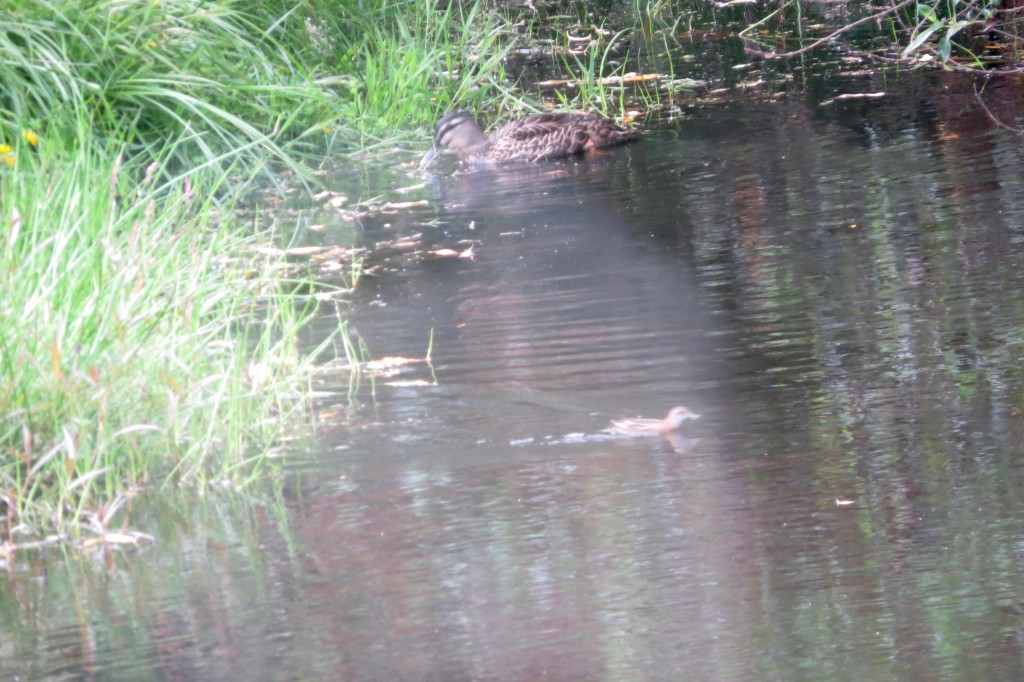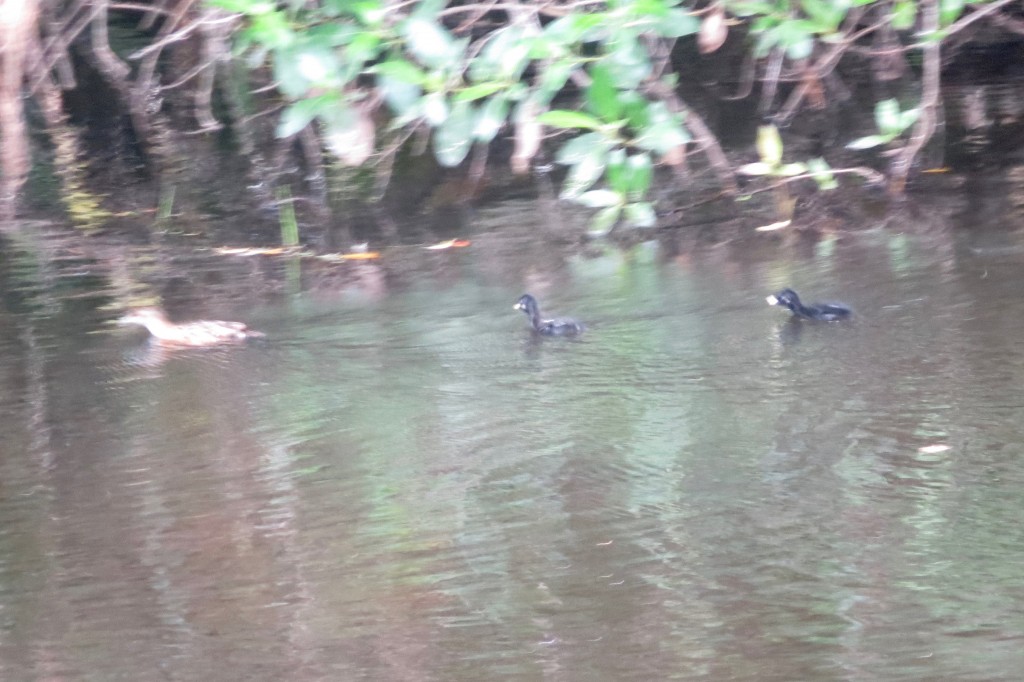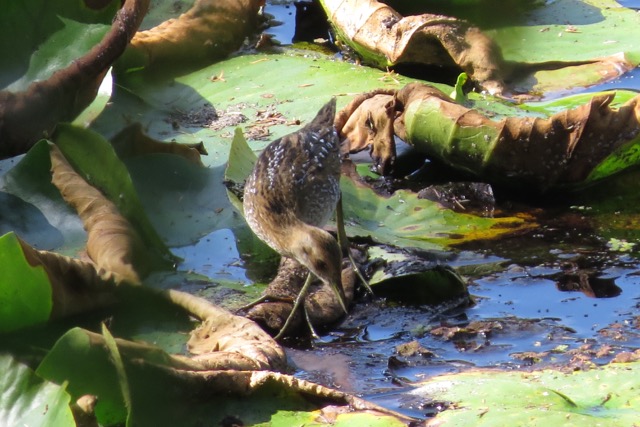Crake watching in Hawke’s Bay
In the fifteen years that my husband, Ian, and I have lived in the house we built beside a wetland here in Wairoa, Hawkes Bay, we have occasionally heard the burring sound of the notoriously secretive kotoreke or marsh crake. We have caught only very rare glimpses of them.
And so it was a great thrill when Ian spotted what looked, for a moment, to be a duckling, swimming to the floating raft of rushes we call ‘the island’. It climbed up a reed, snatched at an insect, flew back onto the water and swam rapidly towards the shore with the morsel in it’s beak. It had to be a crake!
After locating our camera, we made attempts to capture this little bird on film. Soon, we spotted her with 5 tiny fluffy black chicks in tow. Our excitement combined with their speed, resulted in disappointingly blurred photos. But we caught brief glimpses of them as they worked their way along the edges.
There appeared to be only one parent bird. She rushed about feeding her chicks, whose almost inaudible begging calls were relentless.

Parent with food in its beak.

Parent swimming with two chicks in tow.
The kotoreke were not seen for the next few days, but Ian built a hide above a water lily patch just in case they came back. We cleared away vegetation that blocked our view of the swamp and scanned the swamp edge at every opportunity, hoping to catch a glimpse of our crake family.
Three days after the crakes first appearance our son, Doug, managed to capture video footage of the parent feeding a chick.
The crake family appeared occasionally over the next few days. When the chicks were about 11 days old, we saw no more of the parent bird –though, to our great delight, one of the chicks had settled on the water lily patch – directly below the house – where it stayed for the next two weeks. At first the chick fed on tiny pond-skaters on the water surface and snails and other aquatic life sheltering under the lily pads. It was tiny – Ian likened it to ‘a bumble bee on stilts’!
The chick’s feathers grew rapidly to reveal the subtle stippling of white on shades of brown that so perfectly camouflages this tiny rail in it’s wetland environment.

To our enormous surprise on viewing a video one day we spotted a second crake juvenile in the same frame! It seemed that we had been observing two crakes but as they were never seen together we hadn’t realized this!
By now the crake(s) stalked their food – snatching dragonflies from the air, or standing in one spot, hunched, heron-like, above little pools between the leaves, waiting for water insects to surface. It had a favorite roost within the water lily patch to which it retired to rest and preen. It was now very active and alert, climbing confidently over the tops of the leaves and exercising its flight muscles, dashing over the lily pads and beating its wings.
By the end of January, at three and a half weeks old, the juvenile crake was swimming and flying confidently in search of food. It would climb up a bunch of tall reeds and from this elevation fly for several metres across a stretch of water. Now running out of food on the water lilies, it left its familiar territory and took off around the edge of the lake to feed with frantic energy within the sedge and willow weed. By now it was probing in the mud with its beak looking for food.
As the crake was now moving about at a greater distance from our hide, we built a new one nearer to its new feeding range. This proved to be a bad move as the crake wouldn’t come anywhere near it. Apart from a brief sighting on the opposite shore it disappeared and we thought we had seen the last of it.
Finding the juvenile crake again was a complete fluke. Three days after we had last seen it – Ian found it again. He was inspecting our orchard, which is adjacent to another little wetland about 100 metres from the main swamp, when he spotted the crake partially hidden behind a basket willow. This tree was the source of food – aphids and honeydew – for an abundance of birds and insects.
Ian was able to photograph the crake for four more days. Keeping very quiet and moving slowly, he was able to approach to within 4 m of it. His cover was a small tree, which left much of him in full view. The crake seemed to accept this arrangement.
The crake’s new roost was a hollow at the base of the willow where it would fluff its feathers and preen for lengthy sessions. To gain sufficient height to fly it used its beak, as a parrot would, to haul itself up a suitable branch. It would then fly a short distance to adjacent cover under a cabbage tree, where it turned over leaves and found creatures to eat in the dense duckweed.
On the 9th of February the surface weed below the cabbage tree had been totally disturbed by ducks. There was no sign of the crake and we haven’t seen it since.
Over the 32 days of observation the crake had grown from a fluffy chick a day or two old to a fully fledged and independent juvenile.
